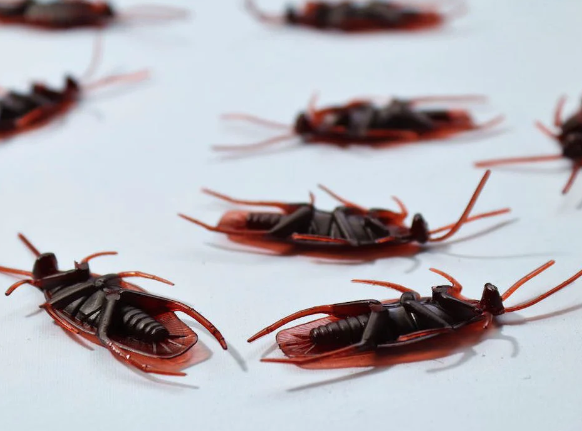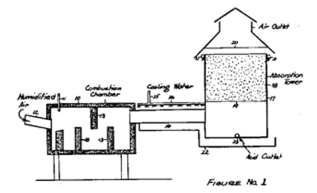Introduction of Bifenthrin
General description
Bifenthrin is an off-white to pale tan waxy solid with a very faint slightly sweet odor. Used as a broad spectrum insecticide. It is a carboxylic ester obtained by formal condensation of cis-3-(2-chloro-3,3,3-trifluoroprop-1-enyl)-2,2-dimethylcyclopropanecarboxylic acid. It has a role as a pyrethroid ester insecticide and a pyrethroid ester acaricide. It is an organochlorine compound, an organofluorine compound and a cyclopropanecarboxylate ester. It derives from a cis-chrysanthemic acid. Its wide use is easy to cause large residues Although bifenthrin is metabolized rapidly in human body and does not have the risk of accumulation, studies have shown that it has neurotoxic effect and interferes with the normal function of nervous system by affecting the activity of animal nervous system and ion channel [3-5] Therefore, primary agricultural products containing bifenthrin residues in long-term low-dose diet will cause serious harm to human health.
Application
bifenthrin(BF) is a synthetic pyrethroid pesticide, which has the characteristics of wide insecticidal spectrum, fast knockdown effect, long duration, strong stomach toxicity and contact killing effect [1-2] Bifenthrin has been widely used in the control of agricultural pests such as cotton, tea, fruit trees and vegetables and sanitary pests such as termites and mites [1] Bifenthrin has stable chemical properties and is not easy to decompose after entering the environment.
1.At present, the effective components of anti termite agents used in soil in China are mainly bifenthrin, imidacloprid, chlorpyrifos and fipronil [2].The 5% bifenthrin microcapsule suspension showed the effect of field termite control lasting for 70 months in average,while the 5% bifenthrin suspension showed 29. 7 months of lasting effect in average. Conclusion The 5% suspension agent of bifenthrin microcapsule applied in soil showed long last efficiency in termite control, suggesting that the bifenthrin microcapsule may be firstly considered in the prevention of termites in new buildings[1]
2.To access the persistence of biphenthrin, insecticide residue analyses were carried out monthly, just after spraying until 90 days of storage. To evaluate the biological efficacy of biphenthrin, 20 adults of each species were placed in petri dishes with sprayed grain, and kept in climate cabinets under 27oC and 55% of RH, during 48h. Evaluations were done every 15 days, starting just after spraying and finishing at 90 days of storage. Both persistence and biological efficacy of biphenthrin reduced as storage time and grain temperatures increased.Additionally, S. zeamais was more tolerant to biphenthrin than T. castaneum.[2]
Synthesis
A series of novel bifenthrin derivatives are designed and synthesized to enhance the anti-mosquito activity in this thesis. 2-chloro-3-iodobenzenemethanol was synthesized by carboxylation, acylation, esterification, reduction with 1-chloro-2-iodobenzene as the parent. And then, esterification of 2-chloro-3-iodobenzenemethanol with 3- (2,2- dibromoethenyl) -2,2-dimethylcyclopropanecarboxylic acid (commonly known as dibromo-chrysanthemic acid), generating compound 5 [3-iodo-2chlorophenyl 3-(2,2-dibromovinyl)-2,2- dimethylcyclopropanecarboxylate]. Lastly, compound 05 is Suzuki cross-coupled with the corresponding aryl boronic acid to form a new bifenthrin derivative. The optimization conditions are as follows:
1) Selection of synthesis route:Priority esterification can improve the success rate of reaction and reduce the occurrence of side reactions.
2) Optimization of coupling reactions:Solvents, alkali and catalysis all affect the yield of the reaction. The best way to do that is using toluene as a solvent, adding potassium phosphate, adding a catalyst [1,1-bis(diphenylphosphino)ferrocene]palladium dichloride,and then adding The corresponding aromatic boronic acid was reacted at 80° C for 8 hours. After a series of post-treatments, the corresponding novel bifenthrin is obtained in a yield of 30 % to 80 %.all the compounds synthesized were characterized by 1H NMR, 13C NMR,HRMS.
Figure Synthesis routes of novel Bifenthrin Pyrethroids.
In this paper, o-chloroiodobenzene was used as the starting material to synthesize the designed compound. According to the literature, o-chloroiodobenzene was modified and carboxylated at low temperature to obtain 2-chloro-3-iodobenzoic acid (compound 2). Methyl 2-chloro-3-iodobenzoic acid (compound 3) was obtained by esterification of 2-chloro-3-iodobenzoic acid with methanol. The product 2-chloro-3-iodobenzanol (compound 4) was obtained by reduction on the basis of compound 3. The obtained compound 4 was esterified with another raw material 1R, 3R dibromo inulin to obtain the intermediate target compound sz-b (compound 5). Finally, taking sz-b as the lead compound, the target compound 6-22 is obtained by reacting with different types of aromatic boric acid. The synthetic route is shown in Figure.[3]
Toxicity
Bifenthrin(3-[(1Z)-2-chloro-3,3,3-trifluoro-1-propenyl]-2,2-dimethylcyclopropanecarbo-xylic acid (2-methylbiphenyl-3-yl) methyl ester is an important active ingredient of a new kind of pyrethroid, with low toxicity and low residue. However, overuse of pyrethroid insecticides has brought about some serious ecological problems, such as high-level resistance and fish toxicity. Pyrethroid insecticides ar a new generation of high-efficiency broad-spectrum insecticides, which are widely used because of their good insecticidal effect and low toxicity. [4]
Reference
1. Zhang Lijuan, Zhang Minjuan, He Chong, etc.: comparison of concentration recovery of bifenthrin in tea after simplification and simplified central control sample, food safety guide, 25 (2021), 109-110.
2.Zhan-bao J., Zheng-ping P. & Ning Z., "Observation on the effective period of two bifenthrin formulations in field soil against termites," Chinese Journal of Hygienic Insecticides & Equipments, Vol.27, No.3(2021), p.270-272.]
3.Yang Yang: synthesis and Bioactivity Evaluation of a new bifenthrin: Guangdong University of technology, 2019.
4.Zhang Huan: toxic effects of bifenthrin and fenvalerate on Corbicula fluminea: Huazhong Agricultural University, 2020.
You may like
Related articles And Qustion
See also
Lastest Price from Bifenthrin manufacturers

US $0.00/kg2025-09-23
- CAS:
- 82657-04-3
- Min. Order:
- 1kg
- Purity:
- 98%
- Supply Ability:
- 1000kgs

US $1.00/KG2025-04-21
- CAS:
- 82657-04-3
- Min. Order:
- 1KG
- Purity:
- 99%
- Supply Ability:
- 10 mt



